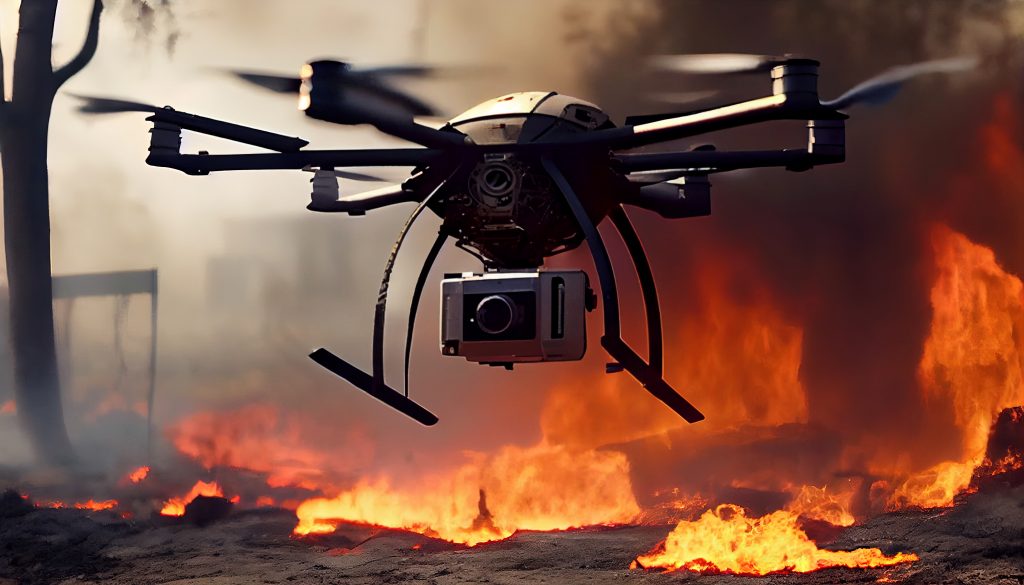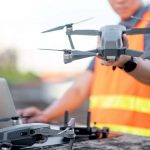Uses of drone camera technology is redefining what we know about nature. Stunning images are capturing animals as never seen before. Natural events are being documented more often due to the sheer number of consumer drones. Hardly a day goes by without some kind of stunning interaction between drones and nature.
Stunning Visuals
In Iceland, a videographer just sent their drone into the heart of a volcanic eruption. The footage is amazing. The up-close footage is almost too unbelievable, the natural instinct is to think it is CGI. The low flying drone zooms right over the lava spewing and flowing from the explosion.
The Spiti Valley, in India, recently was featured in drone footage. The gorge had many viewers comparing the scenes to images from Mars. The scope of the area cannot be captured properly without the use of drone technology.
A massive Ef-3 tornado was captured by drone in Kansas. Scientists are trying to predict where the next tornado may form, but despite all of the science the storms have remained unpredictable to date. Hopefully, footage like this will help solve the puzzle.
All of these encounters are leading to some amazing footage. For some owners of drones, the footage is all too real. In Palm Beach County, FL, a realtor’s new drone was snatched out of the sky by the jaws of an upset alligator.
Drones are also perfect to showcase highlights for tourism efforts.
One such example is the drone footage from the “Great Rivers of China” video series. The footage features a drone showcasing sunrise over the waters of Zhelin lake.The videos hope to highlight the areas. The videos are being used to exhibit the importance of the areas economic and social development to China.
Check out the Chicago Cubs drone video! This awesome flight through Wrigley makes you want to see the Cubbies “Play Two”, a la Ernie Banks.
Environmental Protection
In Mendocino, CA, drones are spotting small patches of kelp to help identify kelp population health. Restoration efforts are pinpointed to the correct areas. Maps are being generated of the California coast. Scientists want to compile the data for better decision-making about how to keep the “Redwoods of the Sea” from further decline. A publicly accessible tool, Kelp-o-matic, is speeding the compilation of data. Scientists are hoping this technology can be useful in mapping kelp across an array of different coastlines.
In Ecuador, the cocoa crop is facing similar headwinds. Being a fickle crop, it is difficult to grow. Small farmers are finding that they do not have the infrastructure necessary to run a profitable business. Some of the substitute products are eating into the market share of cocoa. Some customers will always prefer the taste of cocoa to the alternatives. However, these pricing demands have made the need for technology essential. The farmers are using drones to apply pesticides and fertilizers. The goal is to use drones to help boost plant growth.Labor reduction and cost savings is helping some of the businesses succeed. The locations of cocoa farms often make it difficult for machinery to access the location. Drones are proving to be strategic in survival.
The National Park Service deploys drones to help maintain the vast land under its control. The drones are used for fire control. Additional uses include rescues, photography, and scientific studies.
Scientists from Aberdeen, Scotland used drone tech to determine pregnancy status of a group of bottlenose dolphins, they were studying. A determination was made that 14 of the dolphins were pregnant. How’d they reach these findings? Scientists used laser technology to measure the length and width of the specimens.
This data was to accurately determine pregnancy. Further studies are scheduled to study these breakthroughs. The team hopes that the continued use of drone technology will be a major contribution to the study of these populations.
Drones have also captured 5 killer whales attacking Great White Sharks. This was one of the first times this behavior was ever observed. Scientists are questioning whether this is learned behavior. Only one Orca had been known to engage in this behavior previously.
In South Africa, White sharks were not spotted in the area for 45 days after the attack. Scientists are piecing together all of these actions to learn all they can about the animal’s behavior.
Conclusion
Drones capture amazing footage. The public is captivated daily by new and interesting drone footage. Drones are still in their infancy, but examples seem to pop up everyday of drones finding broader use among the general population. The cost of getting stunning drone footage is getting smaller by the day. These videos can be useful to the advancement of science. What’s more the public has an appetite for the product. Will your video be the next to go viral?





